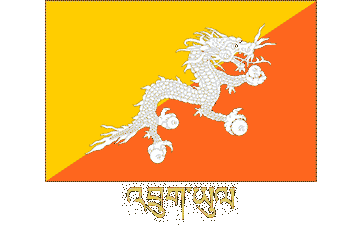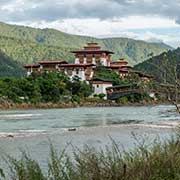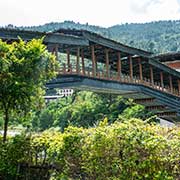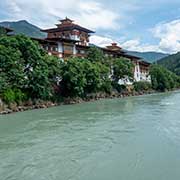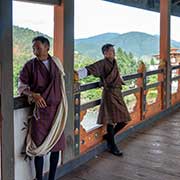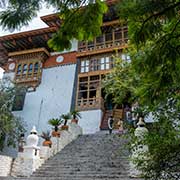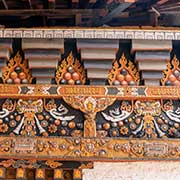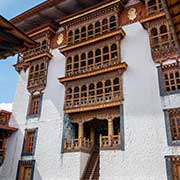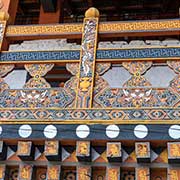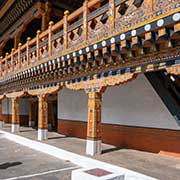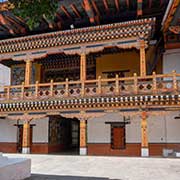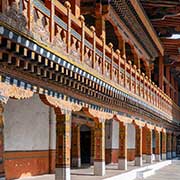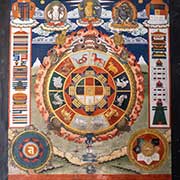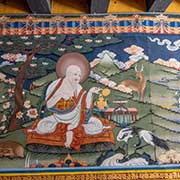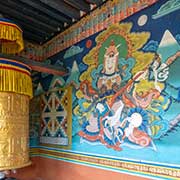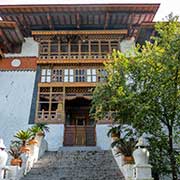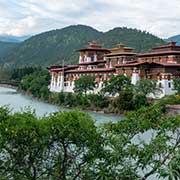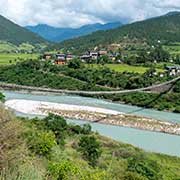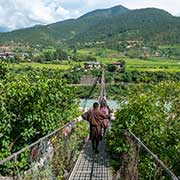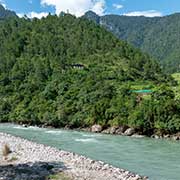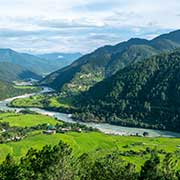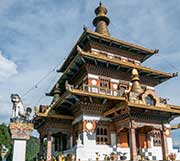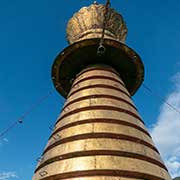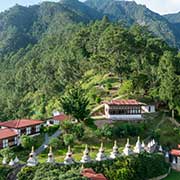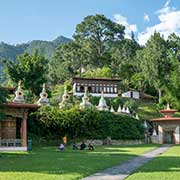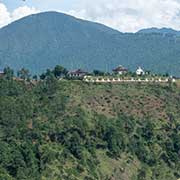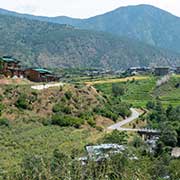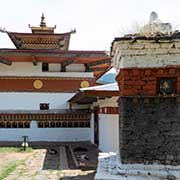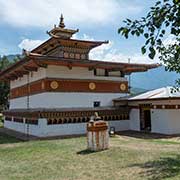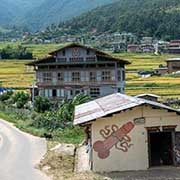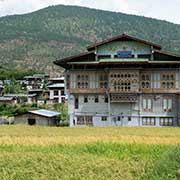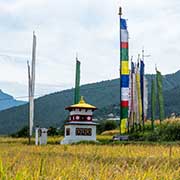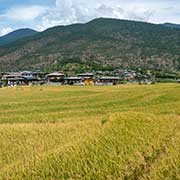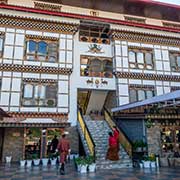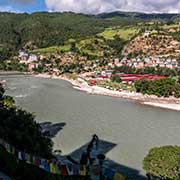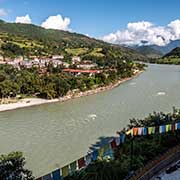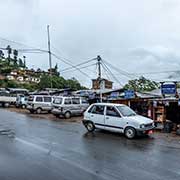Photos of Punakha, Bhutan's previous capital, Bhutan
Punakha, Bhutan's previous capital
Punakha Dzong, constructed in 1637–1638, is Bhutan’s second-oldest and second-largest Dzong. It was the administrative centre and seat of the Government of Bhutan until 1955. It is situated northeast of Thimphu, about 72 kilometres by road. It is also named Pungthang Dechen Phodrang Dzong (“Palace of Great Happiness”). It was built in 1637-1638 by Ngawang Namgyal, the first ruler of a unified Bhutan.
you may then send it as a postcard if you wish.
Punakha Dzong, beautifully situated between the Pho Chhu and Mo Chhu rivers, remains the winter capital, with the head of Bhutan’s religious establishment with an entourage of monks staying there, as it has a milder climate than Thimphu: its altitude is only 1,200 metres. A covered wooden cantilever bridge crosses the Mo Chhu River to the Dzong; the original 17th-century bridge was washed away by a flash flood in 1957 but rebuilt between 2006 and 2008 in the traditional style.
Not far from Punakha Dzong is a metal suspension bridge of 160-180 metres long across the Po Chhu River. Nearby, on top of a hill, is the Khamsum Yulley Namgyal Chorten, a four-storey, pagoda-style stupa with a golden spire; commissioned by the Queen of Bhutan to provide spiritual protection, peace and harmony. The building contains large sculptures of protective deities, and a large garden has various smaller pagodas, some of which contain prayer wheels. Bhutanese carpenters, painters and sculptors took nine years to build the complex.
About 12 kilometres south of Punakha Dzong, near the village of Sopsokha, is Chimi Lhakhang, a monastery founded, built, and blessed by Lama Drukpa Kunley (1455–1529), the “Divine Madman”, who aimed to teach the way of Buddhism by singing, humour and outrageous behaviour, including wild sex; he also advocated the use of phallus symbols (his “Flaming Thunderbolt of Wisdom”) as paintings on walls, as can be seen on some buildings.


